Austria
Austria
The following Nativities are each displayed in a unique permanent setting created by Marian Library Crèche Collection volunteers. The descriptive text for each was written by Father Johann Roten, S.M.
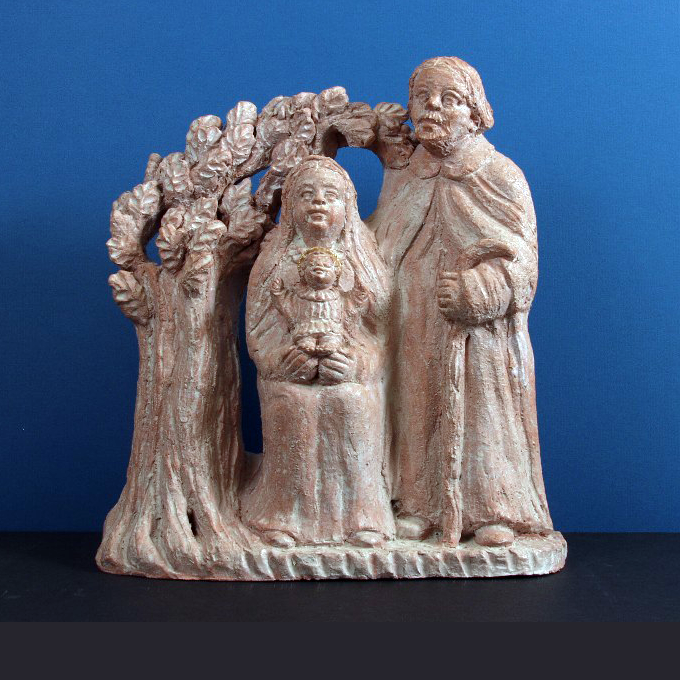
A Victor's Crown
Hermine Arbeitshuber
At first glance, this set of artificial stone gives the impression of a Pop and Mom crèche. Mary and Joseph radiate the well-fed happiness of people at ease with themselves and the world. Indeed, for some German cultures, physical plentiness is a sure promise of bliss. This holy couple seems happy to present their Child-Savior to the world. Mary’s posture, although mama rather than queen, is that of the enthroned Madonna. The figure of Joseph suggests both physical support and a proud husband. His generous stature complements and contrasts the sturdy laurel to Mary’s right. Its dense foliage covers mother and child like a victor’s crown.
– ML.1118.22
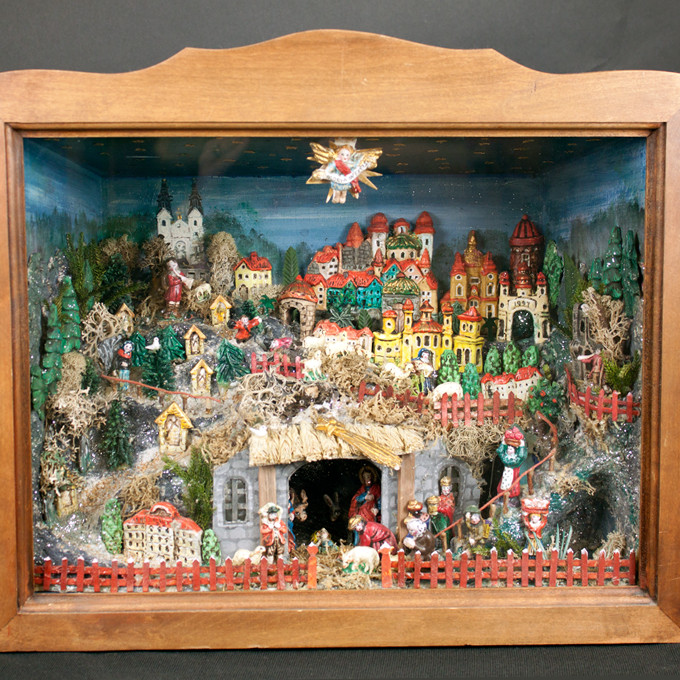
Jesus in a Box
Hermine Arbeitshuber
Hermine Arbeitshuber built this crèche for The Marian Library Collection. It represents a specific Austrian crèche type called Gasteiner Kastenkrippe. The nativity is set in a medium-sized wooden box covered with glass. A rich scenery is deployed before the eyes of the beholder, frequently adding local elements or events of the artist's life to the Christmas scene. The artist of this nativity box created a backdrop reminiscent of the city where she lives, the Austrian city of Linz. We see the skyline of the city, gates and churches, in particular the famous Marian sanctuary of Pstlingberg. The pilgrim's path leading to the sanctuary is marked with the Stations of the Cross which the artist prayed many times, most recently during a period of serious illness. To the left of the stable you will find a big house with a red roof. This is the silhouette of a minor seminary where the artist spent many years of hard work.
– ML.1113.07
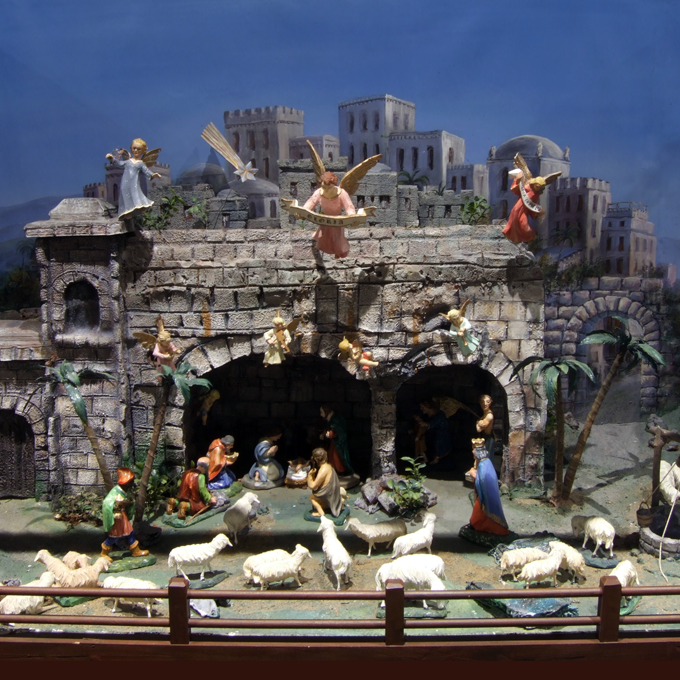
As It Was in the Beginning
John Schnegg
The artist, John Schnegg, works in the tradition of his homeland, Tyrolia. The style is oriental, an attempt to reconstruct the nativity "as it was in the beginning." This tradition, initiated by Austrian artists at the turn of the last century, uses "near oriental" (mid-Eastern) architecture, dress, and ethnic characteristics. These are mixed in with typically Tyrolean elements, in particular the elaborate setting, the painted landscape of the Holy Land, and a host of angels in various positions and roles (Gloria angel, angels calling the shepherds, musicians, and even a guardian angel). John Schnegg is a woodcarver and the descendant of a crèche crafters dynasty known in Tyrolia since the eighteenth century. His figures, all wood carved, are patterned on the so-called peasant style. The harsh traits of the face and strong colors of the dress highlight the "ordinariness" of the Incarnation. They contrast with the smooth artistry of the figures' postures and movements.
– ML.0250.01
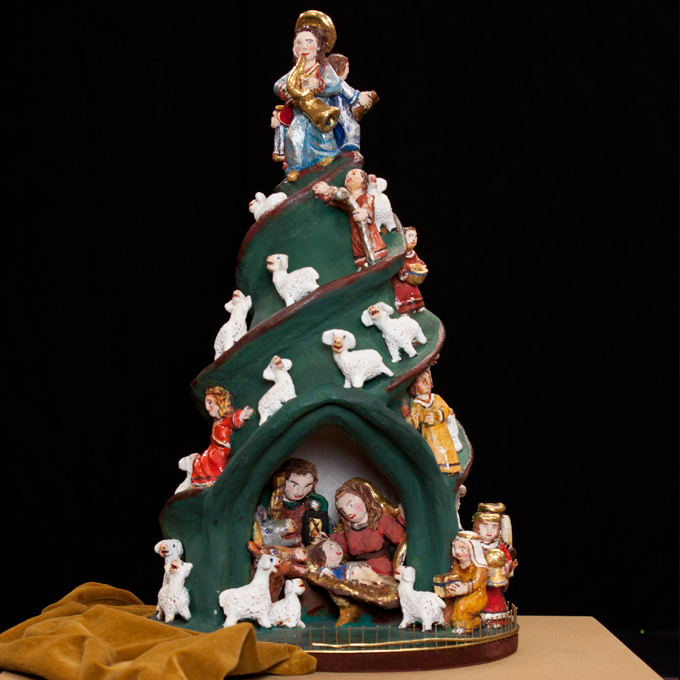
To the Center of the Earth
R. Himmelbauer
This stylized crèche mountain, crafted in peasant gothic style, describes a downward spiraling movement starting at the top with the three musician angels and ending at the bottom with the cave of the nativity set deep inside the mountain. Heaven (angels) calls to witness God's saving grace in Christ. It penetrates all layers of human reality, and is present even in the cave of its darkest recesses. The joyful procession of frolicking sheep and richly-painted shepherds and kings is a symbol of new creation, born again in Jesus Christ. It contrasts with the elegant but empty beauty of the smaller mountains surrounding it.
– ML.0158.17
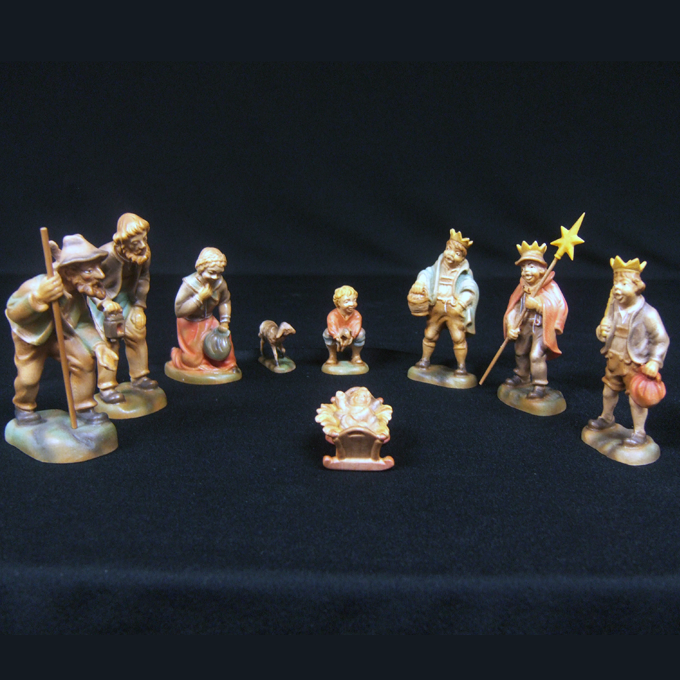
Heaven on Earth
Meusburger Family
Is it true that on Christmas the stars fell from heaven? Is it true that the Christ child fell from heaven with the stars, and found himself on a bed of moss in the deep, deep forest? Christmas lore is inexhaustible. How could it be otherwise. As it was told and retold the centuries over, the miracle of miracles gave rise to many fairytales. But it is a children's privilege to keep the miracle alive. This is what this set attempts to suggest. That, yes, the stars fell from heaven, and yes, you can find the Child in the midst of a dense forest, provided you are courageous enough to brave darkness, tangled roots and loneliness. You will find him on a bed of moss and roses in the company of Joseph and Mary, and surrounded by three boy-kings singing the Christ child to sleep. The boy-kings is a Germanic custom. On January 6, boys dressed up as the three kings walk the village streets, knock on house doors and sing Christmas carols for those who are generous and hospitable.
– ML.0137.09
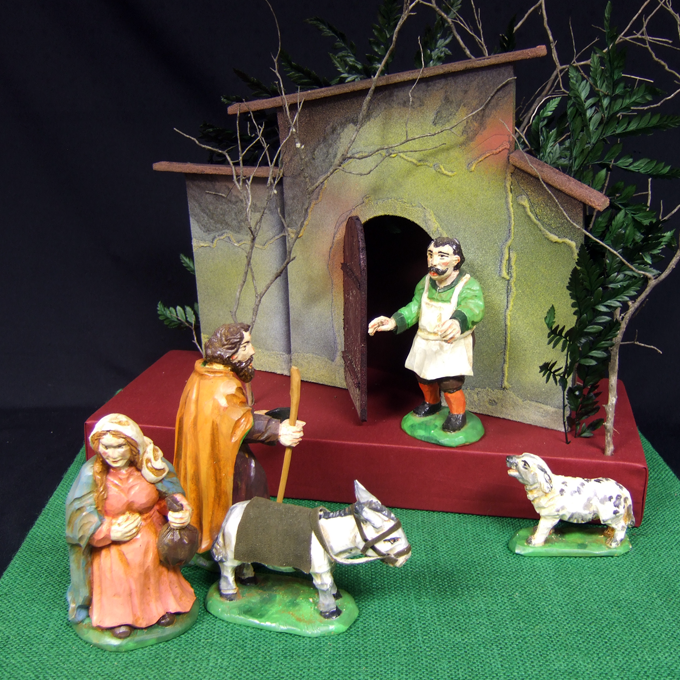
Shelter-Seeking
H. Störinger
H. Störinger's shelter-seeking group ties in with the extended Christmas tradition. This includes not only the nativity but also the events immediately preceding and following it, that is, the holy couple's search for accommodation in Bethlehem and the Flight into Egypt. The former bears the name of "Shelter-Seeking." The scene usually shows Mary sitting on a donkey; Joseph is leading the animal. The couple is threatened by the innkeeper and his dog. In this scene all figures are on foot. The wood carving is rough, and in imitation of a style developed by amateur woodcarvers, mostly farmers. "Shelter-Seeking" is not limited to figures. It is frequently reenacted in Hispanic culture. Families visit each other to share in the joy of the impending event of the nativity. Where the holy couple was once rejected or found only locked doors, people now open their doors and extend hospitality in the name of Jesus Christ, the rejected one.
– ML.2642
